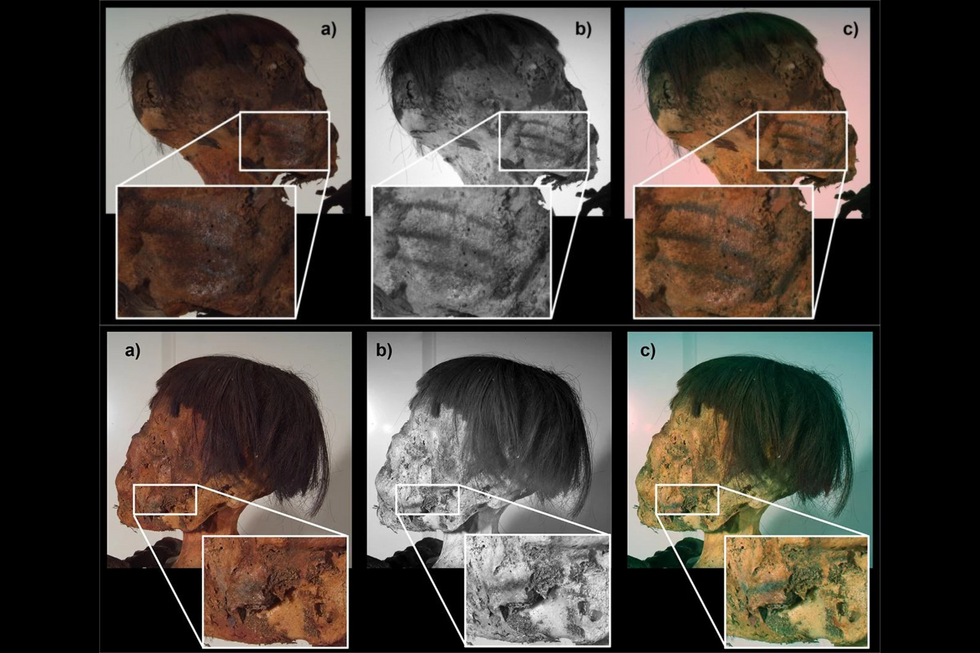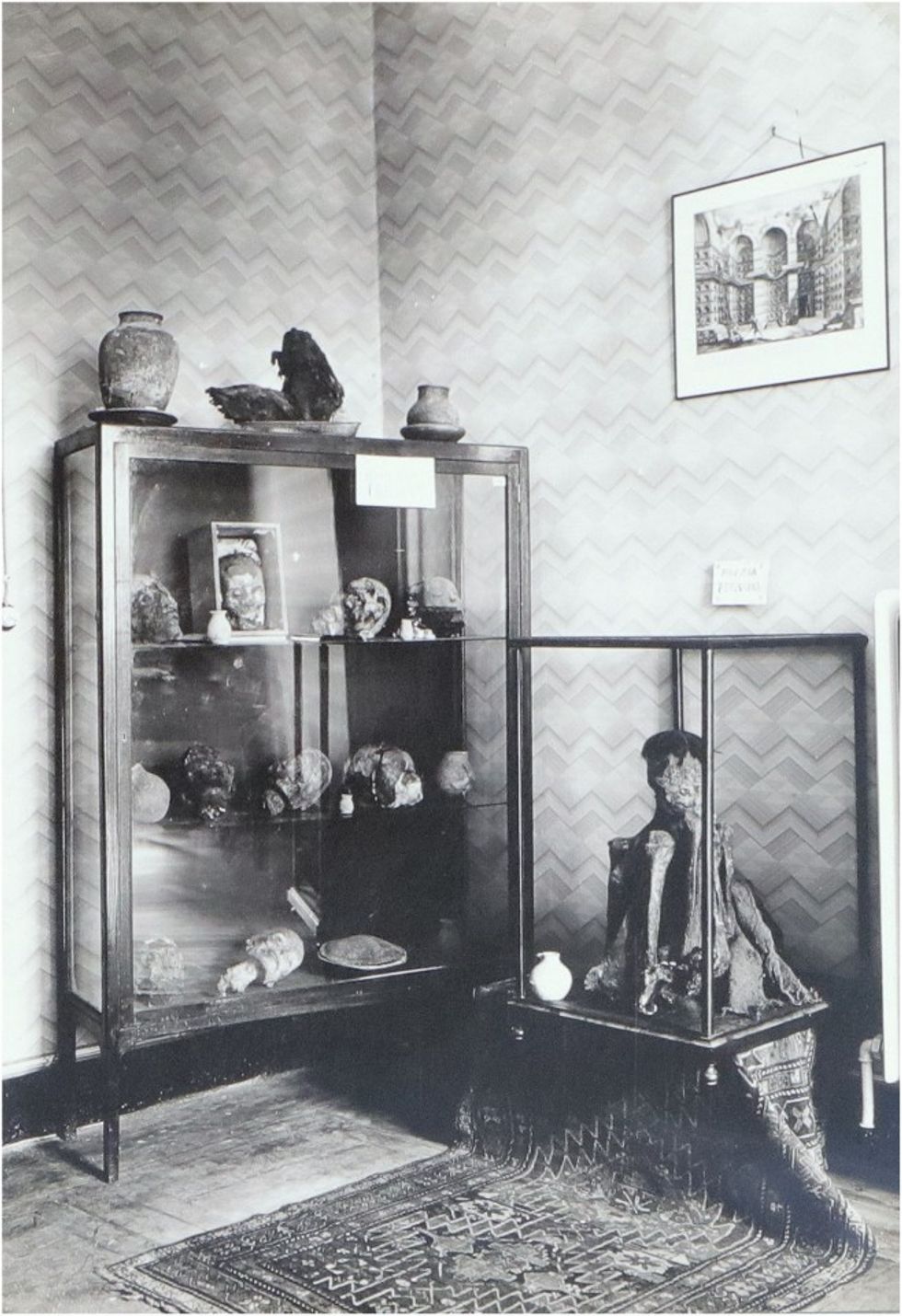Archaeologists uncover never-before-seen facial tattoos on 800-year-old mummy

The tattoos used to be invisible to the naked eye - but now, researchers have brought them to light for the first time
Don't Miss
Most Read
Archaeologists have discovered never-before-seen tattoos on an 800-year-old mummy using advanced infrared analysis techniques.
The well-preserved female mummy, held at the Museum of Anthropology and Ethnography at Italy's University of Turin, was excavated from a site in the Andes mountains.
Radiocarbon analysis revealed the woman lived between 1215 and 1382 AD.
Researchers used two new infrared analysis techniques to uncover tattoos invisible to the naked eye, finding three straight running lines from ear to mouth on both cheeks and an S-shaped marking on her wrist.

Infrared analysis techniques show the ancient mummy's tattoo (top-right)
|JOURNAL OF CULTURAL HERITAGE
Chemical analysis using x-ray fluorescence and Raman spectroscopy revealed the tattoos were created with pigments developed from iron minerals magnetite and pyroxenes.
The analysis showed a surprising absence of charcoal, which is the most commonly used tattoo material reported in literature.
"The results show both rare shapes and anatomical location - lines on cheeks and S-like mark on wrist - and unusual ink composition," researchers wrote in the study.
This unusual composition sets the ancient tattoos apart from typical South American body art of the period.
MORE FINDS FROM THE ANCIENT AMERICAS:

The mummy, seen on display in a museum showcase in the early 20th century
|JOURNAL OF CULTURAL HERITAGE
The tattoos feature rare anatomical locations and simple designs that have proved difficult to interpret and identify with any specific culture.
South American tattoos are typically more complex drawings on hands, wrists, forearms, and feet, making cheek tattoos considerably rarer.
In fact, no other ancient tattoo found in the region so far is comparable to the S motif discovered on the mummy's arm.
Given the location of the tattoos on body parts not usually covered by clothing, researchers suspect they may have had a "decorative or communicative purpose".
LATEST ARCHAEOLOGY UPDATES FROM GB NEWS:
However, they add that "at the moment, it is not possible to attribute either a sort of medical or therapeutic purpose or a cultural provenance" to them.
The visible placement of the facial and wrist markings suggests they were intended to be seen by others, distinguishing them from hidden tattoos that might have served purely personal or spiritual functions.
But despite extensive analysis, the specific cultural significance of these unique markings remains unknown.











